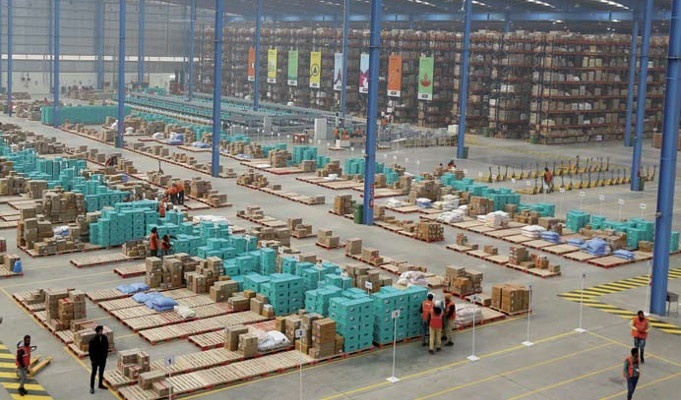
As the pandemic has spread and its humanitarian impact has grown, businesses and individuals worldwide have shifted their priorities. The impact of and the reaction to the pandemic on supply chains and logistics appear to be spreading across the globe. Retail is one of the sectors being hit hardest by the coronavirus outbreak.

In the wake of factories closing for extended periods of time or operating at limited capacity, retailers are wrestling with current and potential disruptions in their production processes. Businesses now need to explore ways to reach consumers’ doorsteps through marketplaces, their own website or other alternate channels.
As retailers figure out how to navigate in these uncertain times, we explore ways to adapt your strategy to the current environment and safeguard your business:
Diversify sales channels – Whether a lockdown has been imposed or not, consumers are spending more time in their homes and limiting their trips to brick and mortar stores. This phenomenon is leading to an increase in online shopping and pantry-loading. Consequently, offline operations continue to falter.
– If your product falls under the category that continues to sell on Amazon or any other online marketplace, redirect your offline inventory to it
– If you are affected by online marketplace’s recent policies prioritizing sale of essential items, you should consider shifting focus to your own website
Adjust your ad spend – When setting advertising budget, you likely did not account for the current COVID-19 crisis. Now is the time to reallocate your ad dollars based on demand and inventory. If stock is running low, turn off those ads, and instead, put your spend towards advertising products that have healthy inventory levels.
Stabilize the supply chain – A pandemic outbreak of this magnitude has caught companies off guard, with a shockwave of ripple effects affecting their entire supply chain. Here are some measures to help with the recovery process:
– Scenario planning strategies – While different organizations face unique risks, companies should develop plans for both optimistic and conservative situations. Work with your suppliers and plan inventory in accordance with each of the scenarios.
– Supplier diversification – Create and implement a contingency plan by employing multiple suppliers. The aim is to effectively and efficiently leverage additional networks among various suppliers’ pool, production and distribution networks.
Explore alternative fulfillment channels – If you’re an Amazon seller facing order fulfillment issues through FBA, explore shipment options on the platform. If you decide to switch to FBM or SFP, you will have to store, fulfill and ship all orders on your own. If that’s not possible, you can partner with third-party logistics or opt for direct manufacturer shipping options. Additionally, you can assess whether diversification of fulfillment channels can be a long term solution. Relying on Amazon as your only fulfillment partner makes businesses very vulnerable, especially during this already volatile time. Having a diversified logistics strategy can help you avoid pitfalls during unexpected occurrences that are associated with relying exclusively on one shipping channel
Prioritize products and manage demand volatility – As buying behavior evolves, a company offering multiple products might want to make fewer of the low-volume-low-profit products and focus more on popular products that satisfy evolving demands. For example, companies selling weight training equipment may want to prioritize products that facilitate home workouts over the ones used in gyms and studios.
The current COVID-19 pandemic has caused disruption with various degrees of impact. Retail priorities and supply chain issues are changing quickly. It is time for companies to rapidly assess, recover, and respond quickly to numerous obstacles and challenges that still stand in the way. While the retail environment will stabilize at some point in the future, it’s difficult to predict how our ‘new normal’ might look.
We have an opportunity now to build resiliency to effectively weather the global shocks of tomorrow. Continue to invest in your teams, your tools, and the systems that fundamentally power your business. The consumers will return, and when they do, we each have an opportunity to meet them where they are.


